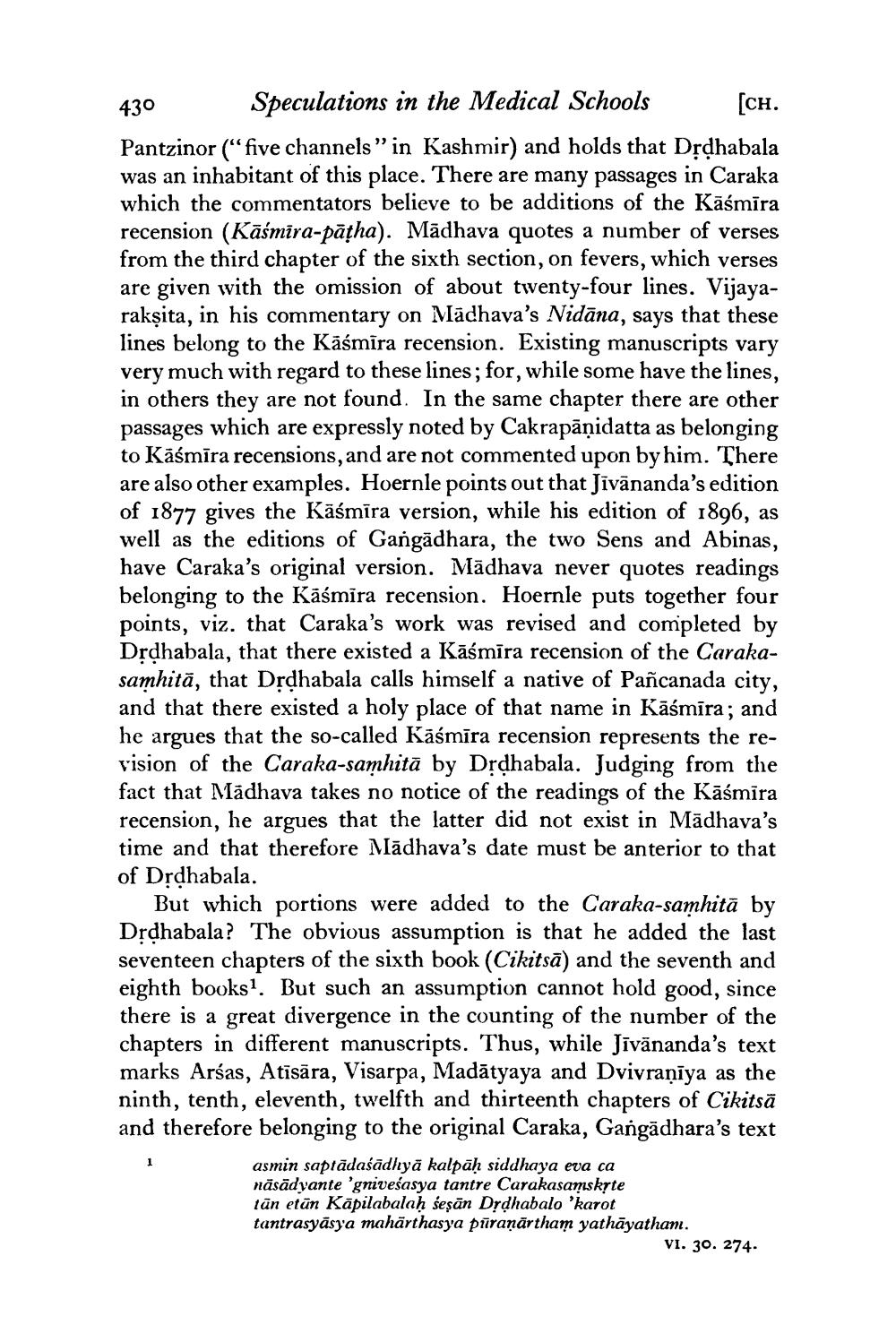________________
430
Speculations in the Medical Schools [CH. Pantzinor (“five channels” in Kashmir) and holds that Drdhabala was an inhabitant of this place. There are many passages in Caraka which the commentators believe to be additions of the Kāśmira recension (Kāśmira-pătha). Madhava quotes a number of verses from the third chapter of the sixth section, on fevers, which verses are given with the omission of about twenty-four lines. Vijayarakṣita, in his commentary on Madhava's Nidāna, says that these lines belong to the Kāśmīra recension. Existing manuscripts vary very much with regard to these lines; for, while some have the lines, in others they are not found. In the same chapter there are other passages which are expressly noted by Cakrapānidatta as belonging to Kāśmīra recensions, and are not commented upon by him. There are also other examples. Hoernle points out that Jivānanda's edition of 1877 gives the Kāśmīra version, while his edition of 1896, as well as the editions of Gangādhara, the two Sens and Abinas, have Caraka's original version. Mädhava never quotes readings belonging to the Kāśmīra recension. Hoernle puts together four points, viz. that Caraka's work was revised and completed by Dựdhabala, that there existed a Kāśmīra recension of the Carakasamhitā, that Drdhabala calls himself a native of Pañcanada city, and that there existed a holy place of that name in Kāśmīra; and he argues that the so-called Kāśmīra recension represents the revision of the Caraka-samhitā by Drờhabala. Judging from the fact that Madhava takes no notice of the readings of the Kāśmira recension, he argues that the latter did not exist in Mädhava's time and that therefore Mădhava's date must be anterior to that of Drdhabala.
But which portions were added to the Caraka-samhitā by Drdhabala? The obvious assumption is that he added the last seventeen chapters of the sixth book (Cikitsā) and the seventh and eighth books?. But such an assumption cannot hold good, since there is a great divergence in the counting of the number of the chapters in different manuscripts. Thus, while Jīvānanda's text marks Arśas, Atīsāra, Visarpa, Madātyaya and Dvivraṇīya as the ninth, tenth, eleventh, twelfth and thirteenth chapters of Cikitsā and therefore belonging to the original Caraka, Gangādhara's text
asmin saptādasādhyā kalpāḥ siddhaya eva ca näsādyante 'gniveśasya tantre Carakasamskyte tān etun Kāpilabalaḥ śeşān Drdhabalo 'karot tantrasyāsya mahārthasya pūraņārtham yathāyatham.
VI. 30. 274.




